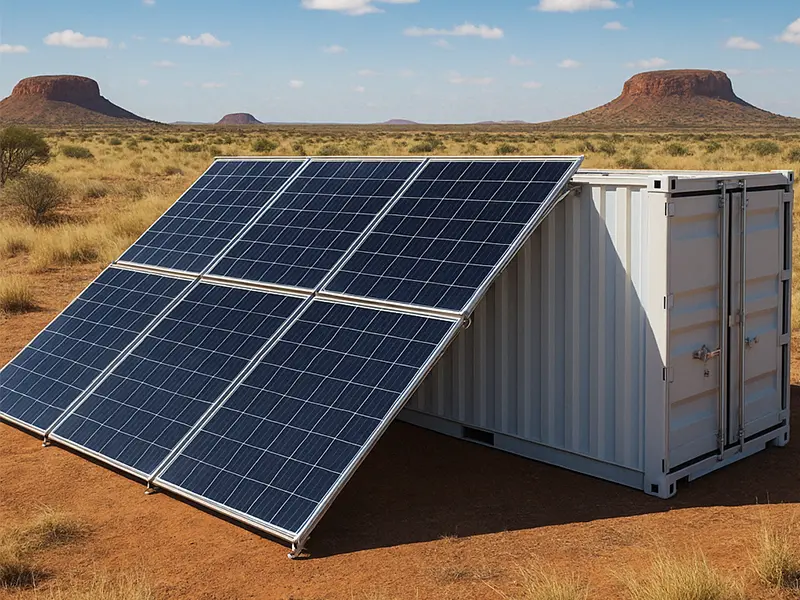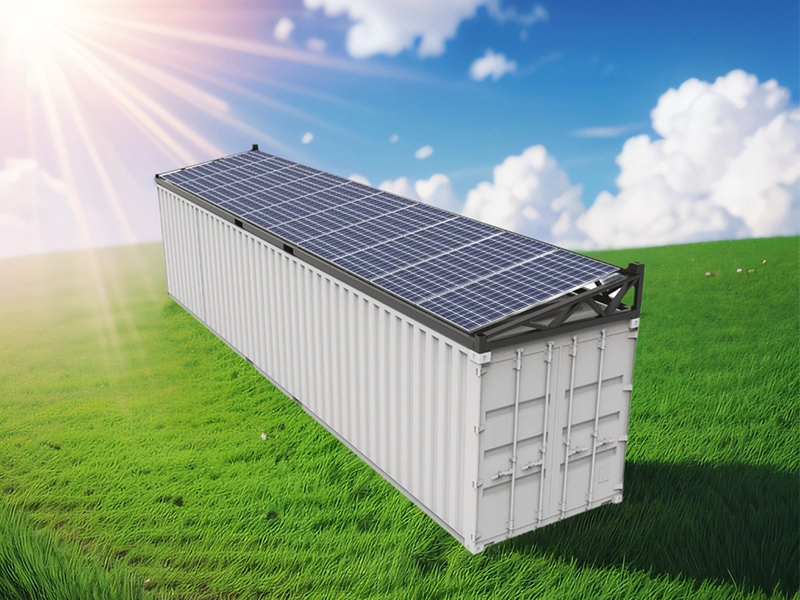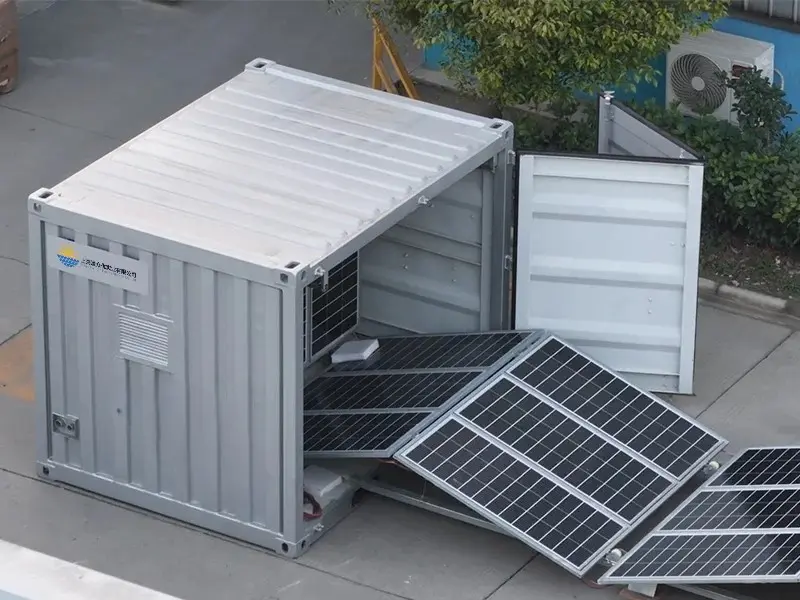Why 80% of Australia’s Remote Businesses Choose PV Containers: Unveiling the High Conversion Solution
Australia’s Solar Revolution Needs Mobility
Combining the best solar energy use techniques, Australia is the highest electricity-generating country in terms of square meter because it receives around 2,000-3,000 kWh per kvadrat meter of irradiation per year (Geoscience Australia). It has continued challenges for traditional fixed solar systems, such as great distances, extreme climates, and relatively distant communities. Here's where solar photovoltaic foldable containers come in-welcoming a whole new arena for portability, durability, and intelligent energy management.
1. Engineered for Australia’s Harsh Environments
- Heat & Dust Resistance:
With n-type TOPCon bifacial modules and enclosures rated IP68, these containers can maintain an efficiency loss of less than 5% at 60 degrees Celsius (compared to 12% for conventional PERC panels) as affirmed from the mines in WA's Pilbara regions. - Cyclone & Flood Resilience:
For use in such a disaster-prone area as Queensland, compliance with AS/NZS 1170.2 wind load standards for 250 km/h winds and waterproofing for their battery compartments is a must.
2. Rapid Deployment: Energy Within Hours, Not Months
- Mining Camps: Reduced diesel consumption at BHP's WA iron ore sites by 70% within 48 hours of the site becoming live.
- Disaster Response: The NSW Rural Fire Service can reinstate three times faster compared to a standard set up with the use of the container system during the 2023 bushfires.
3. Slash Logistics Costs by 40%
- Foldable Design: Standard container extending 40 feet in length is capable of holding 116 m of solar panels (57.6 kW capacity) and will therefore cut the shipping volume by 50% as compared to fixed systems.
- Inland Transport Compliance: Pre-certified for road weight across all states with no permits to delay for any cattle stations in NT or mining routes in SA.
4. Maximize Government Subsidies
- Federal Incentives:
- Claim Small technology Certificate (STCs) currently valued at $30-$40/MWh under Renewable Energy Target (RET) program.
- CEFC loan partly subsidized (50%) to fund project costs.
- State Programs:
- VIC: Solar Homes Program rebates up to $1,400 for residential PV+storage.
- NSW: Empowering Homes Scheme $14,000 for off-grid systems sharing a roof in the countryside.
5. Smart Energy Management for Remote Operations
- IoT Monitoring: Satellites have connection control systems for immediate adjustments in one of Australia's connectivity blackspots, NT's Barkly Tableland.
- Hybrid Configurations: Diesel generators with LFP batteries with over 6,000 cycles attached can achieve up to 50% fuel cost savings at some of WA's most remote gold mines.
6. Avoid Land-Use Hassles
- Zero Permanent Infrastructure: Deploy under QLD No Permanent Infrastructure Mobile Plant Exemption laws temporarily - excellent for seasonal farming or exploration sites.
- Tax Benefits: Changes the asset classification into movable property and thus escape fixed land taxes, both in NSW and VIC.
7. Future-Ready Scalability
- Hydrogen-Ready: Creating solar-to-hydrogen conversion research as a new 24-hour power consumer in South Australia's Copper Coast region.
- VPP Participation: Earned $0.85/kWh selling excess into AEMO's Virtual Power Plant network (trial in Melbourne suburbs) for the benefits to distribute that energy.
Case Studies: Real-World Success in Australia
| Industry | Project | Results |
| Mining | Rio Tinto’s Pilbara Iron Ore Site | 1,200 tCO₂ reduction annually; 3.2-year ROI |
| Agriculture | QLD Darling Downs Cotton Farm | 65% lower irrigation costs; achieved NFF Sustainability Certification |
| Tourism | Great Barrier Reef Island Resort | 90% diesel displacement; silent operation enhances guest experience |
Why Australian Businesses Are Switching
They are clearly not only an energy solution but also a strategic advantage for Australia's geography and policy environment. From reducing costs of remote operations to preparing for climate catastrophes, this technology is a perfect match for the country's net-zero 2050 aspirations.
FAQs about using solar containers in Australia
1. What kind of maintenance do solar containers need in Australia?
Not much: Panel cleaning is every quarter with system checks. IoT remote monitoring conducted80% of the diagnostics.
2. Do WA dust storms have an impact on output?
An output drop of less than 5% occurs during severe storms, and the module self-cleaning coatings and IP68-rated enclosures limit dust ingress.
3. What`s the payback period for the solar containers in remote areas?
About 2-3 years for mines (fuel savings), and for farms, 4-5 years. Government rebates reduce payback times by 18-24 months.
4. Any special design for extreme heat?
Yes: High-temperature tolerant LFP batteries + liquid cooling (working stably at 60° C).
5. How quickly after a disaster can you get these in place?
<48 hours-Including preconfigured units that don't require grid approvals(e.g., for the recovery after NSW bushfires).
6. Can they work with existing microgrids?
Yes. Smart inverters are in accordance with AS/NZS 4777 for smooth grid/off-grid switching.
7. Are the installed systems capable of scaling?
Easily: Add modules via plug-and-play ports(like +30% capacity without changing out any hardware).



